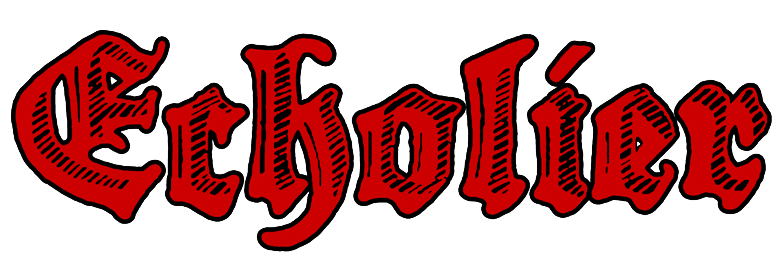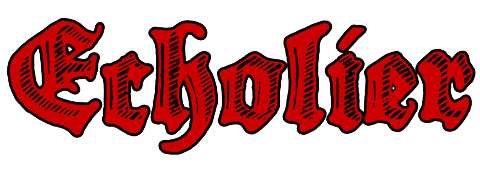1904: The Caterpillar Tractor
I awoke to the sound of my rooster, Theodore, crowing outside my window. It was April 20, 1904. Dawn was beginning to break. Lying in bed and stretching, I thought to myself, why do I have to get up so early? Then I remembered that I was leaving for the World’s Fair today. Throwing off my sheets, I jumped out of bed, slid into my overalls, and pulled a shirt over my head. I then grabbed my boots and ran down the stairs, pulling them on as I went. Before I made it to the front door, I realized that I had forgotten to put on my socks, my boots were on the wrong feet, and my shirt was over my overalls. After getting myself together, I stepped outside. Theodore was still crowing at me to get up.
“Theodore, I’m awake! Get off the roof and go convince the hens to make me more eggs! I don’t have time to pet you this morning. I have to feed all the animals and get my invention ready to go to the World’s Fair. Theodore, I don’t know if you know it or not, but I am a genius, and soon I’ll be so rich that I’ll be able to buy you all the hens and chicken feed you want.”
***
It was a sweltering hot day in June of 1902.
“We are stuck again! Uncle Ben, this is ridiculous! This is the third time today! We have to find a better way to get these green beans out of the field,” Ephraim shouted.
“I know, Ephraim, the tires are too skinny and the soil is too soft. It’s just going to keep sinking.”
It was my third year of working with my uncle on his farm, and it seemed like each year we had the same problem with the tractor getting stuck in the soft California soil. Since the tractors were “so heavy and rode on huge metal wheels,” they would sink into the mud every time we moved them (Ryan). Every year, Uncle Ben would say, “by this time next year, we are going to fix the tractor so it doesn’t keep getting stuck,” but we would never get around to fixing them.
We stopped for lunch, and I ate as quickly as I possibly could so I would have time to lay in the soft green grass and rest. While lying there I thought to myself, the belt on the buzz saw we use to cut wood every fall . . . What if we put a belt around the tires on the tractor? Would the tractor be able to move if it was “built on tracks instead of wheels?” (Caterpillar). Could that work? I jumped up and went over to where Uncle Benjamin was resting in the shade of a weeping willow.
“Uncle Ben, what if we took the belts off the buzz saw and put them over the tires to distribute the weight more evenly over the ground?”
“No, I don’t recon that would work. The belts are too thin and would wear out too quick,” he said.
I thought for a second, and then suggested a new idea.
“What if we were to use chains and wrap them around the tires several times?”
That caught his attention, and he appeared to think for a while.
“How would it turn? And aside from that, the chains wouldn’t stay in place. They would just slip off,” he replied.
***
Later that night at dinner he told me that I was on to something with my idea, and that we should try to build something like it. He figured that the toughest part to build would be the drive train, because in order to turn the tractor, we would need to make each track run independently with separate controls. Also, they would all have to run off of one engine.
***
The next day, I awoke to find that my uncle wasn’t in the house, but instead was in his shop tearing apart a tractor. He had stayed up all night, and drawings and plans for our tractor tracks were scattered around the shop. Over the period of the next six months, we developed tracks that would be mounted between two sprockets. The tracks were made out of three chains that were held apart with wooden planks, sandwiched between two steel plates, and then bolted to the chains.
One of our greatest challenges was making a drive train and gear box. We had to somehow get two tracks to run independently off of the same engine. After many hours of tinkering and redesigning our plans here and there, we finally had our first working model drive out of the shop on November 10, 1903. Our neighbor became really interested when he saw Uncle Ben driving it through an especially soft field with ease, so he came over to see how it was possible. After asking many questions and driving through the same field himself, he stood scratching his head.
“Ben, you could be a wealthy man. Take this to the World’s Fair in St. Louis next year, and see if you can sell the contraption,” he said to Uncle Ben.
***
Mr. Smith brought an old newspaper over the next day announcing the World’s Fair. The headlines read, “In the Name of the United States of America I invite all nations of the earth to take part in commemoration of the Louisiana Purchase – William McKinley.”
“Look! Everyone is invited! Someone is bound to see how great this contraption is, and then they will want you to make hundreds of them,” he told Uncle Ben.
***
Time flew over the next few months, and before I knew it, we were arriving at the World’s Fair. I had been to our county fair and even the state fair once, but this was huge. It seemed like it went on for a mile or more! There were people there from all over the world, and while we were setting up our exhibit, I heard at least five different languages swirling around us. Once we had set up, I asked Uncle Ben if I could walk around first. We had made plans to take turns watching our exhibit in two hour intervals.
Uncle Ben was tired from the long trip, and said that he would be glad to sit and watch our exhibit first. I excitedly set off to see all the attractions. As I walked, I saw rides to go on, inventions of every kind, food from all around the world, and many interesting foreign people. After walking for a while, I realized that I was starving. I had been so busy all day that I had forgotten to eat. I continued walking, and I came to a food vendor selling something that I had never seen before. I asked the man selling them what they were, and he said that they were called ice cream cones. I decided to try one, and it was amazing!
“How did you come up with this idea?” I asked.
“Well, I had been selling ice cream in regular bowls, but then I ran out. I talked to the man next door selling waffles, and he said that he could shape his waffles so that they would hold ice cream. He ‘rolled a warm waffle into a cone shape, let it cool and harden,’ and then gave it to me (ice). So far, everybody has loved them!” he told me.
Amazed at the new food combination, I quickly finished my ice cream and continued to walk through the crowded fair. After two hours, I made my way back to my uncle and switched places with him so that he could go look around himself.
I sat down on a small chair next to our invention, and watched as people passed by. As I sat there, many men walking by stopped, walked around the contraption, and asked lots of questions. The most common question was, “what exactly is this contraption?” to which I replied “Caterpillar tracks.” After about an hour, some men stopped by who had worked on the planning of the Panama Canal, and they were very interested in how we had made the drive train work. They wanted to talk to Uncle Benjamin about making them one, and the longer I sat there, the more I realized that our life was about to change. We had been discovered, and we were about to become very rich.
Works Cited
“Caterpillar, Inc.” Gale Encyclopedia of U.S. Economic History, edited by Thomas Riggs, 2nd ed., vol. 1, Gale, 2015, pp. 196-198. Student Resources in Context. 21 Apr. 2017.
“Ice cream.” World of Invention, Gale, 2006. Student Resources in Context. 21 Apr. 2017.
Ryan, Colin. “Caterpillar: building the world.” Truck Trend, Mar.-Apr. 2015, p. 72. Student Resources in Context. 21 Apr. 2017.
Bibliography
“Caterpillar vehicles.” World of Invention, Gale, 2006. Student Resources in Context. 21 Apr. 2017.
Orlemann, Eric C. The Caterpillar Century. St. Paul, MN: Motor International, 2007. Print.
“Saint Louis World’s Fair, 1904.” DISCovering U.S. History, Gale, 1997. Student Resources in Context. 21 Apr. 2017.


Rachel • May 3, 2017 at 11:13 am
Very well done. I really loved how you were able to write a story about such a minor event, but make it seem like it was the most important thing to happen that year. I love Theodore a lot, and the wonderstruck feeling of the Fair. Great job!
Jamie Henderson • Apr 26, 2017 at 3:59 pm
This is an excellent story! I loved your character and his interactions with Theodore and Uncle Ben. Everyone was well developed. My favorite part was when he talked about the invention of the ice cream cone — I never knew that! Good job!
Christa H. • Apr 26, 2017 at 11:45 am
This story was very interesting. I’m impressed that you made me excited about something that people don t really think about, such as tractors. Also I loved how you explained how it works and that you made it easy to fall along!